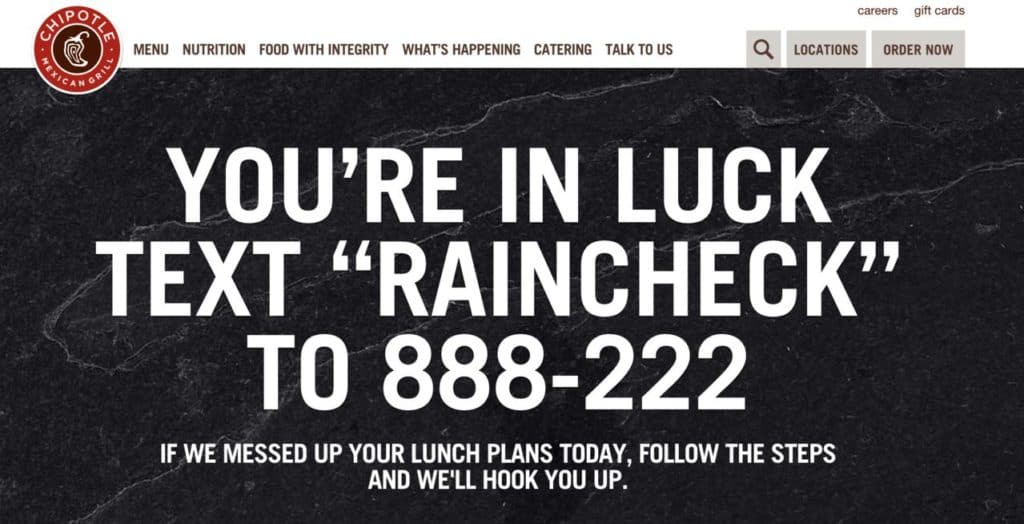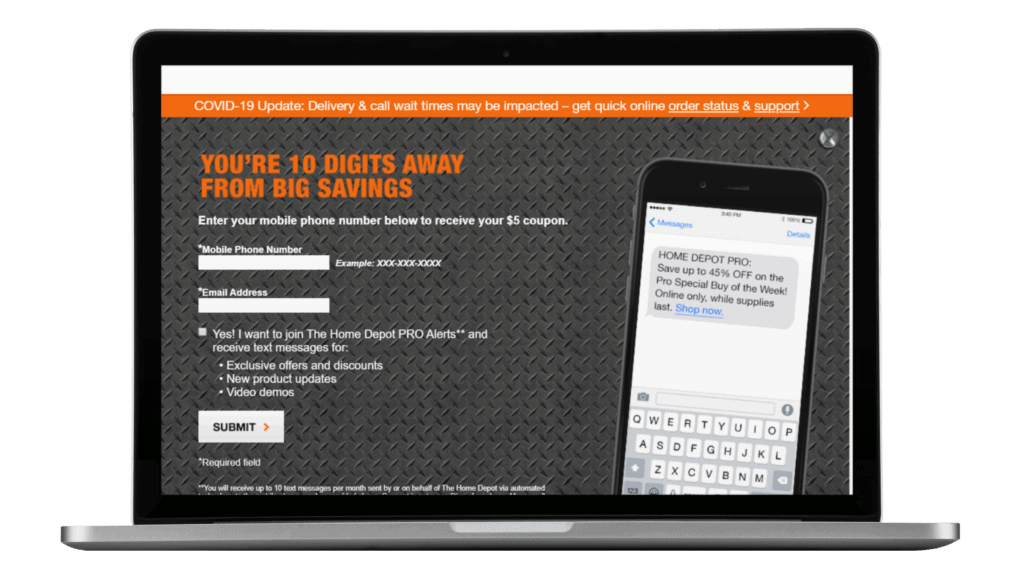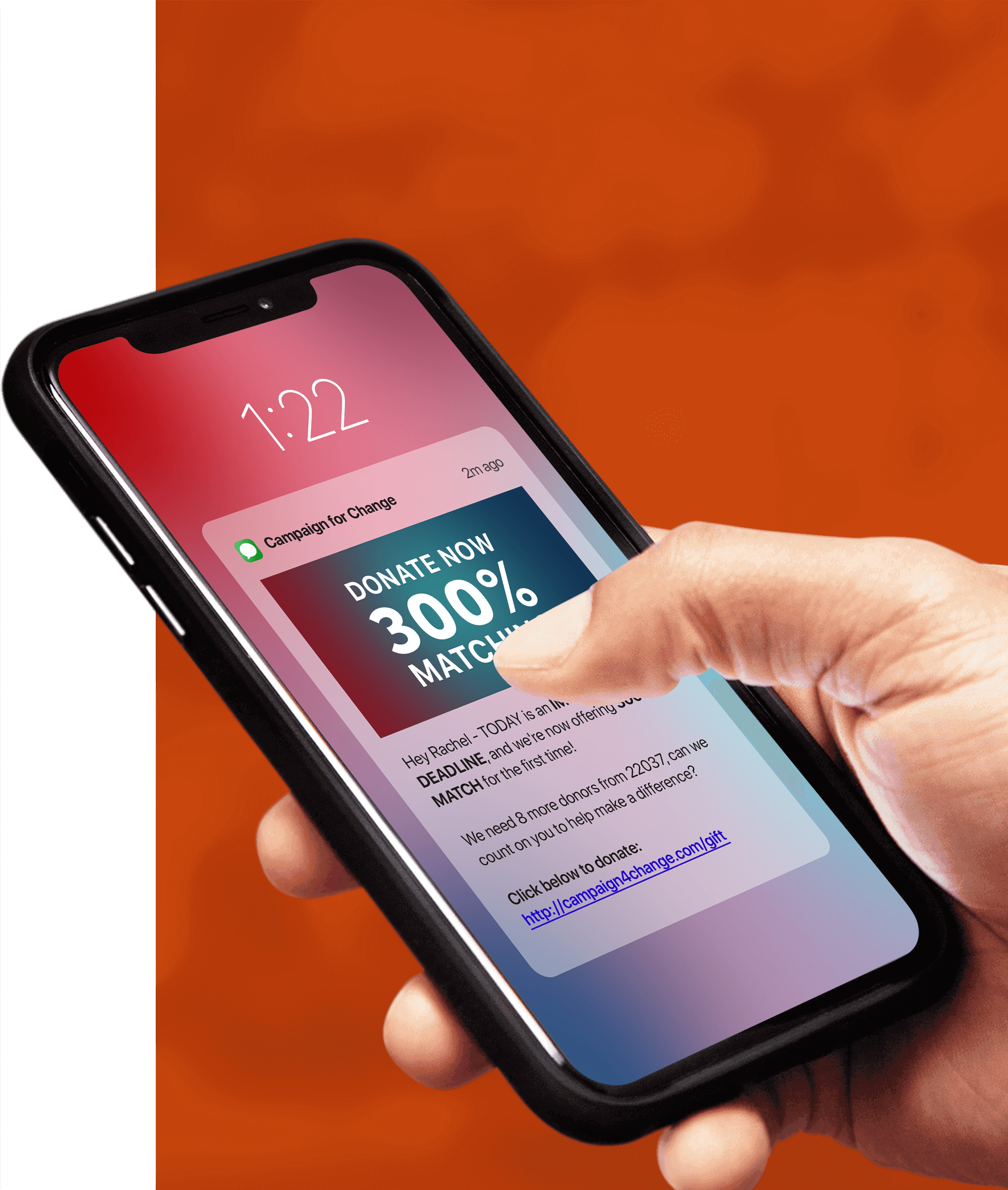5,128 Views
In the video above, Tatango CEO Derek Johnson outlines what an SMS marketing double opt-in is. Prefer to read instead? No problem, please see the post below. You can also find answers to all of your SMS marketing questions in our Q&A video library; click here to browse.
How Can a Consumer Opt In to an SMS Marketing Campaign?
There are two different ways that a consumer can opt in to an SMS marketing campaign. One option is a mobile opt-in (see example below); this is when a consumer uses their mobile phone to text an SMS keyword to an SMS short code in order to consent to receive automated marketing messages.
The second option is a web or point-of-sale opt-in (see example below); this is when the consumer types in their mobile phone number into a website form or a point-of-sale system, and clicks a button to join or subscribe.
What is a Single Opt-In?
A single opt-in is when a consumer does either one of the SMS marketing opt-in options above and they are added to the subscriber list in order to receive SMS messages. Typically, this is when a consumer receives some type of confirmation text message saying, “Hey, congratulations. You’ve joined the campaign.”
What is a Double Opt-In?
As you can tell from the wording, a double opt-in, unlike a single opt-in, requires two steps in order to complete the opt-in process and receive SMS messages from a brand. Depending on the first opt-in method the consumer used (mobile or website) the next step would be a bit different.
When a consumer opts-in to an SMS marketing campaign through a mobile device, the consumer sends an SMS keyword to an SMS short code, which indicates to the SMS software provider that this is a new subscriber and they must be added to a list. For the double opt-in process, instead of ending there, the system would send a message like, “Please reply ‘yes’ to confirm your consenting. Consent is not a condition of purchase.” The system would also prompt the consumer to “agree to the terms and conditions.” These statements ensure that the consumer understands the terms and conditions of the mobile messaging campaign. When the consumer replies “yes” — and only when they’ve replied “yes” — are they opted into the SMS campaign.
The process is similar for those opting in through a website. When a consumer enters their mobile phone number into a website form, and they click to join, they will receive a text message prompting them to double opt-in. The message will say something similar to, “Please reply ‘yes’ to receive automated messages,” and, “Consent is not a condition of purchase”, as well as the terms and conditions that apply to that campaign. Once the consumer responds with the prompted SMS keyword, the double opt-in process is complete.
Why is a Double Opt-in Process Important?
The reason why a double opt-in process is important, particularly for a web form, is that it ensures that the phone number that a customer enters is correct. If someone accidentally or purposefully inputs an incorrect phone number, that number’s owner can ignore the double opt-in and will not receive SMS marketing messages.
Additionally, by getting consumers to double opt-in, you ensure that they consent to the following TCPA regulations:
- Consent is not a condition of purchase.
- Agreement to receive messages via an auto dialing system.
- The terms and conditions of the text messaging campaign.
When a consumer replies “Yes” to all of the items above as part of the double-opt-in process, this means that you, as the brand, have a record in your SMS provider history that you can easily pull up. Without the double opt-in process, a consumer can claim that they have never seen the terms and conditions and did not give consent. To avoid any miscommunication or misperception from the consumer’s side about the SMS marketing campaign, the double opt-in is a best practice.
The double opt-in process is the best way to safeguard your brand from unnecessary compliance issues, to have clear communication with your customers, and to have proper records of consent in the off chance that questions arise.
SMS marketing compliance rules and regulations can get confusing. But don’t worry, Tatango has you covered! Click here to talk to an SMS marketing expert.


